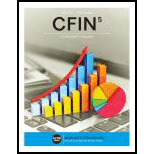
Weighted Average Cost of Capital (WACC) is the required
An optimal capital structure of a company is a mix of debt, equity and preferred stock which can be used to maximize the company’s stock price. Therefore, a target proportion of capital structure and cost of each financing can be used to determine the WACC of the company.
Here,
Proportion of debt in the target capital structure “
Proportion of preferred stock in the target capital structure “
Proportion of equity in the target capital structure “
After tax cost of debt, preferred stock,
Marginal Cost of Capital (MCC) is the weighted average cost of capital for the last dollar raised in new capital. MCC of the company remains constant for some time after which it increases. This depends on the amount of additional capital raised and eventually increases as the cost of raising new capital is higher due to flotation cost. This is mostly evident in case of cost of equity, where first the retained earnings are utilized by the firms to meet their target capital structure and any excess fund required is raised through new equity. So, as new equity is added to the fund, the marginal cost of raising the fund also increases.
The target capital structure of the company is 20% debt, 30% preferred stock and 50% equity.
After tax cost of debt is 3.5%, cost of preferred stock is 6%, cost of retained earnings is 10.2% and cost of new common equity is 12.4%. The company needs to raise $220,000 and expects to generate $100,000 in retained earnings.
Want to see the full answer?
Check out a sample textbook solution
Chapter 11 Solutions
CFIN (with Online, 1 term (6 months) Printed Access Card) (New, Engaging Titles from 4LTR Press)
- Sandhill Co. has a capital structure, based on current market values, that consists of 35 percent debt, 19 percent preferred stock, and 46 percent common stock. If the returns required by investors are 12 percent, 13 percent, and 15 percent for the debt, preferred stock, and common stock, respectively, what is Sandhill’s after-tax WACC? Assume that the firm’s marginal tax rate is 40 percent.arrow_forwardTravis & Sons has a capital structure that is based on 40 percent debt, 5 percent preferred stock, and 55 percent common stock. The pretax cost of debt is 7.5 percent, the cost of preferred is 9.6 percent, and the cost of common stock is 13 percent. The tax rate is 21 percent. The company is considering a project that is as risky as the overall firm. This project has initial costs of $325,000 and annual cash inflows of $87,000, $279,000, and $116,000 over the next three years, respectively. What is the projected net present value of this project? $71,821.94 $76,011.23 $68,211.04 $74272.98arrow_forwardThe target capital structure for Millennium Corporation is 50 percent common stock, 5 percent preferred stock, and 45 percent debt. Its cost of equity is 15 percent, the cost of preferred stock is 6 percent, and the cost of debt is 8 percent. The relevant tax rate is 35 percent.a) What is Millennium’s WACC? b) The company president has approached you about its capital structure. He wants to know why the company doesn’t use more preferred stock financing because it costs less than debt. What would you tell the president?arrow_forward

 EBK CONTEMPORARY FINANCIAL MANAGEMENTFinanceISBN:9781337514835Author:MOYERPublisher:CENGAGE LEARNING - CONSIGNMENT
EBK CONTEMPORARY FINANCIAL MANAGEMENTFinanceISBN:9781337514835Author:MOYERPublisher:CENGAGE LEARNING - CONSIGNMENT Intermediate Financial Management (MindTap Course...FinanceISBN:9781337395083Author:Eugene F. Brigham, Phillip R. DavesPublisher:Cengage Learning
Intermediate Financial Management (MindTap Course...FinanceISBN:9781337395083Author:Eugene F. Brigham, Phillip R. DavesPublisher:Cengage Learning




